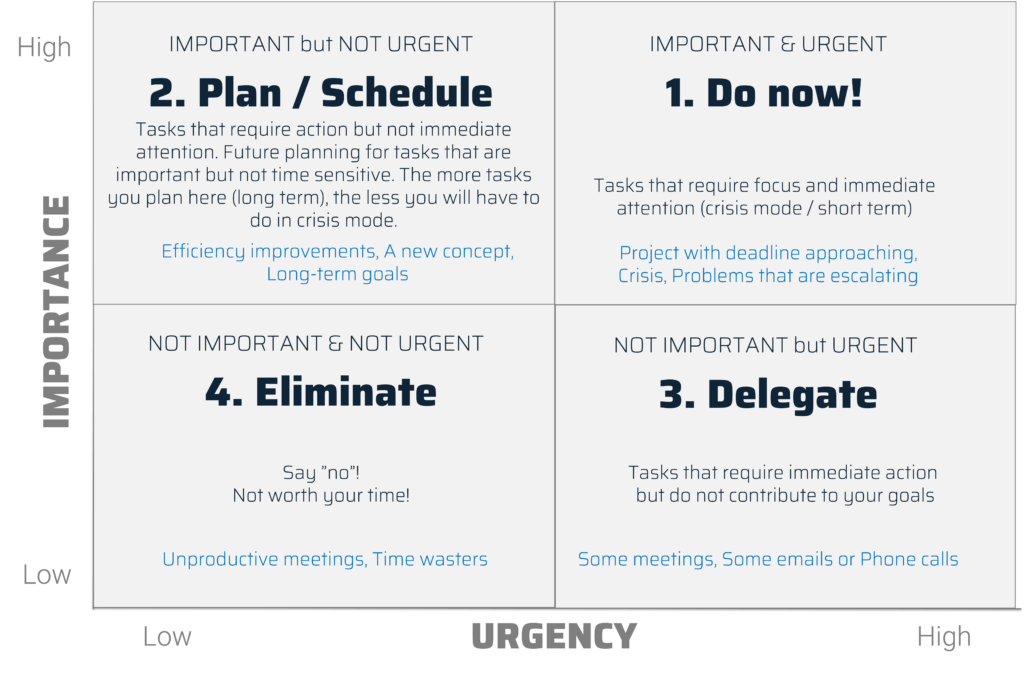
Deadlines are often tight, projects are complex and expectations are high. In the electrical industry, complex project work and its implementation is the order of the day. With WSCAD ELECTRIX, complex project work and tasks can be planned and implemented in a targeted manner. However, project work in the electrical industry requires not only technical expertise and creativity, but also the ability to work under pressure. Stress in the workplace is not uncommon in this environment. But stress can not only affect the health and well-being of employees, it can also jeopardize the quality of work and project goals. In this context, effective stress management is critical.
We have six simple yet effective tips for you on how to incorporate more relaxation into your work and professional life, resulting in long-term stress management.
Three tips for sustainable stress management in everyday work life
1. Take breaks
We frequently forget to take breaks, especially when working on projects with ever-shorter deadlines. Often, we even miss our lunch break. But if you want to remain productive and efficient, you have to take regular breaks. After all, our body’s performance capacity diminishes after about 1.5 hours. Exercise during the break also helps to clear the mind. For example, take a short walk before or after lunch to get some fresh air.
If you have trouble taking regular breaks, try working the Pomodoro method. This method of work was developed in the 1980s by Francesco Cirillo and divides a 2-hour block of work into four intervals followed by a longer break. Just give it a try! You can also use an app as a support: e.g. Session (macOS, iOS) or Pomodor (web).
This is how you work with the Pomodoro method:
Step 1:
Set an alarm clock for 25 minutes. Now work concentrated on your task in the defined time interval.
Step 2:
Take a five-minute break
Repeat steps 1 and 2 a total of four times. This is followed by a longer break of 30 minutes
2. Set limits – learn to say no and prioritize tasks
We all want to do a good job and actively contribute to the company’s goals. However, everyone has their own workload limitations. Too many tasks can cause stress and, in the worst case, burnout. Protect your limits and learn to say no, as well as delegate work tasks, to avoid this. Declining a task or delegating responsibilities is not a sign of weakness, but rather of the ability to realistically assess your own capacities and resources and thus prevent workplace stress.
Can’t turn down or delegate a request? Prioritize tasks and actively engage in expectation management! Ask your supervisor which task has priority and when which time frame is currently available to you and structure your workday accordingly. Or proceed according to the Important and Urgent method:
3. Go offline
Are you one of those employees who are always available on their cell phone, even outside of working hours, or who constantly check their emails? Permanent availability prevents you from relaxing and recharging your batteries and damages your private life in the long run. So switch off your cell phone more often after work, at the weekend and especially on vacation and go offline.
If you need to resolve urgent matters, for example during project work, prioritize your emails and requests and only respond to the really pressing questions. Not everything always has to be answered immediately.
Three tips for sustainable stress management in everyday life
1. Make time for sufficient exercise and sleep
Getting enough exercise and sleep plays a crucial role in stress management. Sustainable stress management is ultimately about reducing stress hormones and ramping up stress-reducing hormones. Sport and sleep are an unbeatable team for this task. Physical activity increases the amount of oxygen reaching our cells and revs up our metabolism. During sleep, body and mind regenerate after exertion. It doesn’t matter which sport you do – the main thing is that you enjoy it and it feels good.
A regular sleep routine calms the mind, promotes physical recovery, increases concentration and sharpens judgement. At the same time, it improves mood and the ability to make decisions. A rested mind allows you to better handle stressful situations and solve problems more effectively. How much sleep they need to be rested is individual. For adults, the average is 7 hours a day. Do you have trouble falling asleep and can’t turn off your thoughts at night? Before going to bed, try the breathing exercises listed below.
2. Arrange deadlines with yourself
In project work, we are used to working according to fixed deadlines and scheduling activities firmly. If you notice that you often miss out on leisure activities due to work stress, make a conscious effort to set appointments with yourself to enjoy activities or hobbies. Set these dates and stick to them until they become a regular habit. Treat your personal appointments like your work appointments. A healthy work-life balance will reduce your stress and boost your productivity during work hours. Or simply put time blockers on your calendar, a proven technique even Warren Buffet uses.
3. Breathe away the stress
There is nothing more fundamental to our health and well-being than our breath. Breathing in and out in a controlled manner helps us reduce anxiety and stress. If the stress at work is getting to you, try one of the two breathing exercises below to help you relax. These exercises can also be easily implemented in the office.
Nadi Shodana – Alternate Nostril Breathing
This breathing technique improves lung function and helps reduce heart rate, blood pressure, and stress levels.
- Step 1:
Place the thumb of your right hand over your right nostril and the pinky finger of the same hand over your left nostril. - Step 2:
Press on your right nostril with the thumb of your right hand, closing it. Now slowly inhale through your left nostril. - Step 3:
At the end of the inhale, hold your breath briefly – closing both nostrils with your thumb and pinky finger. Then lift your thumb and exhale through the right nostril. - Step 4:
At the end of the exhale, hold the breath once more. Then inhale through the right side. - Step 5:
Now alternately close and breathe in through the left or right nostril for at least 5 or 10 passes.
Coherent Breathing
This breathing technique is as effective as it is simple. The goal with this breathing is to achieve a continuous, coherent circulation of inhalation and exhalation.
- Step 1:
Sit upright and relax your shoulders and abdomen. Breathe out. - Step 2:
Inhale gently for 5.5 seconds. Fill your lungs completely with air – breathe into your belly. - Step 3:
Without pausing, exhale for 5.5 seconds. Feel your belly retract as your lungs empty. Each breath should feel like a circle.
Repeat steps 2 and 3 at least 10 times.
* Free video instructions for these and more breathing exercises can be found here: https://www.mrjamesnestor.com/breathing-videos
Conclusion
In the stressful world of project work, especially in the electrical industry, effective stress management strategies are critical to succeeding in challenging projects and everyday life. Applying these six tips can help you build a balanced and sustainable stress management program to improve your health, well-being and work performance. Remember that it is important to allow yourself time for relaxation and recovery in order to be successful in the long term



